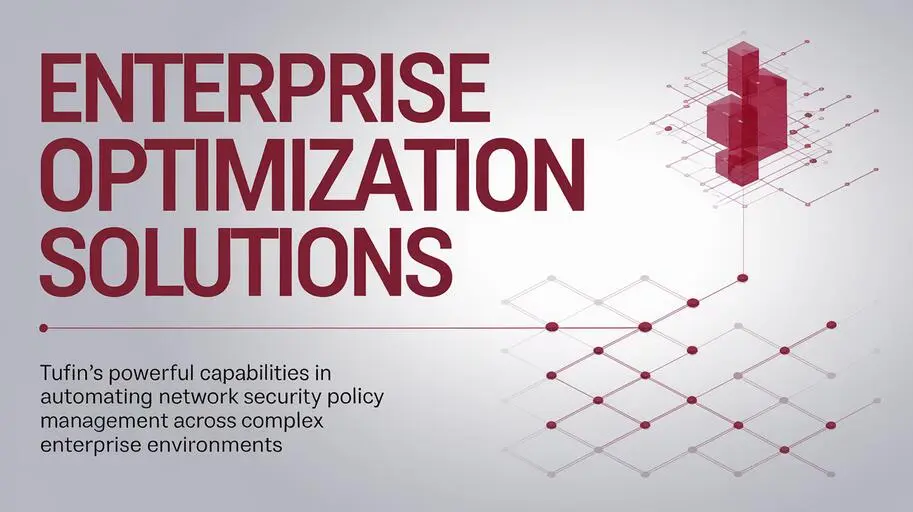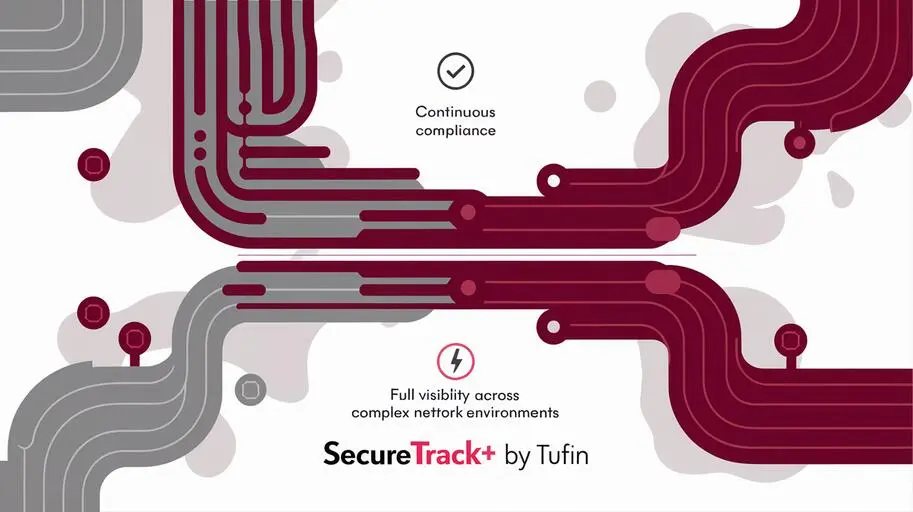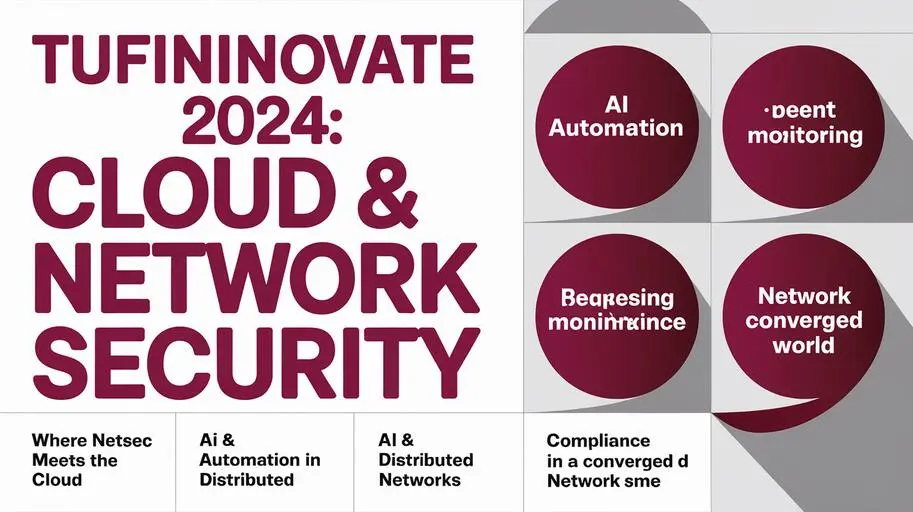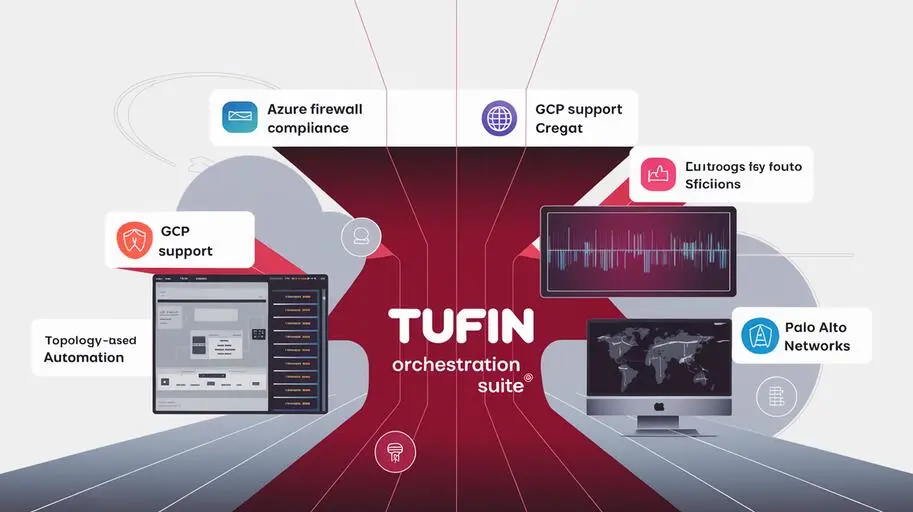
In today’s dynamic digital landscape, protecting network infrastructure from threats is a top priority for any organization. Companies face a continuous stream of new vulnerabilities, increasingly complex configurations, and growing compliance requirements. Effective risk management related to vulnerabilities requires not only accurate problem detection but also rapid response and continuous monitoring. In this area, Tufin offers a comprehensive platform for centralized network topology visualization, risk analysis, and automation of security policy changes, enabling organizations to significantly improve their security management efficiency.
Comprehensive Network Vulnerability Analysis with Tufin
Tufin provides a centralized platform for managing network security, covering various aspects, including vulnerability analysis, security policy management, and security automation.
Integration with Vulnerability Scanners: The Foundation of Effective Vulnerability Analysis
A key element of the Tufin solution for vulnerability analysis is integration with leading vulnerability scanners such as Nessus, Qualys, and Rapid7. Tufin supports integration with various scanner versions, including, for example, Nessus v8.x and v9.x, Qualys Cloud Platform, and Rapid7 InsightVM, ensuring compatibility with existing security infrastructure. Integration allows Tufin to collect vulnerability data from various sources and correlate it with information about network configurations and security policies. Data from vulnerability scanners is transmitted via API using HTTPS protocols, typically in XML or JSON formats.
- Automated Data Collection: Tufin automatically collects vulnerability scanning results from integrated vulnerability scanners, ensuring the information is up-to-date and complete.
- Centralized Storage and Management: All vulnerability data is stored in a centralized repository, simplifying analysis, reporting, and management.
- Data Normalization: Tufin normalizes vulnerability data from various sources, providing a consistent view of information and simplifying its analysis. For example, Nessus might classify a vulnerability as “High,” while Qualys classifies it as “Critical.” Tufin normalizes these values to a single scale (e.g., using CVSS) to simplify prioritization and comparison.
Enhanced Visibility and Contextualization of Vulnerabilities
Tufin does not simply aggregate vulnerability data; it enriches it with context, providing valuable information about how these vulnerabilities affect network security. Tufin analyzes the configurations of network devices such as routers (e.g., Cisco, Juniper), switches, and firewalls (e.g., Check Point, Palo Alto Networks), retrieving data via SSH, Telnet, or API, which allows determining the location of vulnerable hosts and network segments.
- Mapping to Network Configurations: Tufin maps vulnerability data to information about network configurations, identifying vulnerable hosts and network segments.
- Impact Analysis: Tufin analyzes the impact of vulnerabilities on network security, determining which systems are at the greatest risk. For example, if a vulnerability affects a server hosting a critical database, Tufin automatically assigns it a higher priority, considering the potential impact on business processes.
- Vulnerability Prioritization: Tufin helps prioritize vulnerabilities based on their severity, exposure, and potential impact on the business. Various algorithms can be used for prioritization, including CVSS (Common Vulnerability Scoring System), custom metrics that consider the network context, or a combination thereof. Administrators can configure weighting factors for various risk factors to tailor the prioritization system to their needs.
Risk Management and Compliance with Tufin
In addition to vulnerability analysis, Tufin provides powerful tools for risk management and ensuring compliance with regulatory requirements.
Risk Assessment Automation
Tufin automates the risk assessment process, allowing organizations to quickly and effectively assess the risks associated with vulnerabilities.
- Automated Risk Calculation: Tufin automatically calculates risks based on various factors, including vulnerability severity, system exposure, data value, compensating controls (e.g., installed patches, firewall rules), and patch status.
- Customizable Risk Models: Organizations can customize risk models to meet their specific needs and priorities. For example, you can set weighting factors for different risk factors: higher weight for vulnerabilities affecting critical business applications, and lower weight for vulnerabilities for which compensating controls have already been implemented.
- Risk Reporting: Tufin provides detailed risk reports in PDF and CSV formats, containing information about the number of vulnerabilities by severity, vulnerable assets, business units at greatest risk, and recommendations for remediating vulnerabilities. Reports can be tailored to meet the requirements of specific departments and regulatory standards, ensuring informed decision-making based on up-to-date data.
Ensuring Regulatory Compliance
Tufin helps organizations comply with various regulatory requirements, such as PCI DSS (e.g., version 3.2.1, 4.0), HIPAA, and GDPR.
- Automated Compliance Audit: Tufin automates the compliance audit process by performing checks for the presence of required security policies, the correct configuration of network devices, and compliance with established standards.
- Compliance Reporting: Tufin provides detailed compliance reports that help organizations demonstrate their commitment to security.
- Exception Management: Tufin allows organizations to manage exceptions to security policies, providing flexibility and control. For example, a temporary exception may be required for planned maintenance or for testing new solutions. Tufin allows documenting and tracking such exceptions, ensuring transparency and accountability.

Security Automation with SecureTrack and SecureChange
Tufin offers two key products, SecureTrack and SecureChange, which together provide comprehensive security automation for the network.
The Tufin architecture includes SecureTrack, which is responsible for security monitoring and analysis, and SecureChange, which is designed to automate the change management processes. SecureTrack provides information to SecureChange for making decisions about changes, and SecureChange, in turn, uses SecureTrack data to verify policy compliance after changes are made.
SecureTrack: Visibility and Control
SecureTrack provides organizations with complete visibility into network configuration and traffic, allowing them to track changes, identify risks, and ensure regulatory compliance.
- Security Policy Monitoring: SecureTrack constantly monitors security policies, identifying violations and ensuring compliance. SecureTrack uses various protocols for monitoring network configurations including SNMP, NetFlow and sFlow.
- Traffic Analysis: SecureTrack analyzes network traffic, identifying anomalies and potential threats.
- Change Management: SecureTrack tracks changes in network configuration, providing control and preventing unauthorized changes.
SecureChange: Change Automation
SecureChange automates the process of making changes to network configurations, reducing time and costs while minimizing risks.
- Automated Workflows: SecureChange provides automated workflows for change requests, approvals, and implementations. SecureChange integrates with ITSM systems such as ServiceNow and Jira allowing for automation of change request creation and tracking. For example, when a vulnerability is detected, SecureChange can automatically create a change request in ServiceNow, assign it to a responsible employee, and track its execution.
- Pre-Change Risk Analysis: SecureChange analyzes the risks associated with changes before they are implemented, preventing potential problems.
- Automatic Compliance Verification: SecureChange automatically checks that changes comply with security policies and regulatory requirements.
SecureChange also provides change rollback mechanisms in case of problems. For example, if service availability issues are observed after changes are made to the firewall configuration, SecureChange can automatically roll back the changes to the previous configuration.
Integration and API
Tufin offers extensive integration and API capabilities, allowing organizations to integrate it with existing tools and systems.
Integration with Third-Party Systems
Tufin can be integrated with various third-party systems, such as SIEM (e.g., Splunk, QRadar), ITSM (e.g., ServiceNow), and CMDB, providing a comprehensive view of network security.
API for Automation and Customization
Tufin provides a powerful API, using the REST format and transmitting data in JSON format, which allows organizations to automate security management tasks and customize the platform to meet their specific needs.
- Task Automation: The API allows automating tasks such as creating reports, changing rules, and managing users. Example (pseudocode):
import requests import json
Authentication
headers = {'X-API-Key': 'YOUR_API_KEY'}
Retrieving the list of vulnerabilities
response = requests.get('https://tufin.example.com/api/v1/vulnerabilities', headers=headers) vulnerabilities = json.loads(response.text)
Creating a report
...
- Platform Customization: The API allows you to customize the platform to meet the specific needs of network security.
Benefits of Using Tufin for Vulnerability Analysis
Using Tufin for vulnerability analysis provides organizations with a number of benefits, including:
- Improved Visibility: Tufin provides a centralized dashboard for visualizing network topology, security policies, and vulnerabilities, enabling rapid identification of problem areas.
- Reduced Risks: Tufin helps organizations reduce the risks associated with vulnerabilities by automating risk assessment and remediation processes.
- Increased Efficiency: Automating workflows for making changes to security policies reduces task execution time by 50%.
- Regulatory Compliance: Tufin helps organizations comply with regulatory requirements by automating the compliance audit process.
Tufin provides a comprehensive solution for network vulnerability analysis, risk management, and security automation. With integration with vulnerability scanners, enhanced visibility, automation capabilities, and a powerful API, Tufin helps organizations protect their network infrastructure from threats and ensure regulatory compliance.
Tufin is a strategic solution that allows you not just to react to threats, but to anticipate and prevent them, creating a resilient and secure infrastructure.
To learn more about how Tufin can help your organization with vulnerability analysis and risk management, contact us for a personalized consultation and solution demonstration.
FAQs on: Network Vulnerability Analysis with Tufin
-
What is Tufin and how does it help in network vulnerability analysis?
Tufin is a comprehensive network security management solution that provides vulnerability analysis, security policy management, and security automation capabilities. It enables organizations to gain visibility, control, and automation in network security management.
-
Which vulnerability scanners does Tufin integrate with?
Tufin integrates with a variety of leading vulnerability scanners, including Nessus, Qualys, and Rapid7, allowing you to collect and correlate vulnerability data from various sources.
-
How does Tufin help prioritize vulnerabilities?
Tufin helps prioritize vulnerabilities based on their severity, exposure, and potential business impact, allowing you to focus on the most critical issues.
-
How does Tufin automate risk management?
Tufin automates the risk assessment process, allowing you to quickly and effectively assess the risks associated with vulnerabilities and other factors affecting network security.
-
What regulatory requirements does Tufin help comply with?
Tufin helps organizations comply with various regulatory requirements, such as PCI DSS, HIPAA, and GDPR, by automating compliance audits and providing reporting.
-
What are SecureTrack and SecureChange and how are they related to security automation?
SecureTrack and SecureChange are two key Tufin products. SecureTrack provides visibility and control over network configuration, while SecureChange automates the process of making configuration changes, reducing time and costs.
-
What integration capabilities does Tufin offer?
Tufin offers broad integration capabilities with third-party systems such as SIEM, ITSM, and CMDB, and also provides a powerful API for automation and customization.
-
What are the benefits of using Tufin for vulnerability analysis?
Using Tufin provides improved visibility, risk reduction, increased efficiency, and regulatory compliance.
-
How does Tufin help organizations anticipate and prevent threats?
Tufin enables organizations to not just react to threats, but to anticipate and prevent them, creating a resilient and secure infrastructure through comprehensive analysis and security automation.
-
Where can I get more information about Tufin and its capabilities?
To learn more about how Tufin can help your organization with vulnerability analysis and risk management, contact us for a personalized consultation and solution demonstration.




